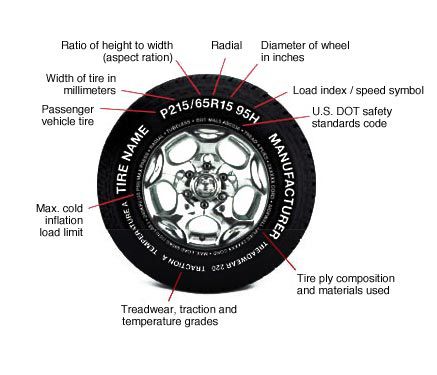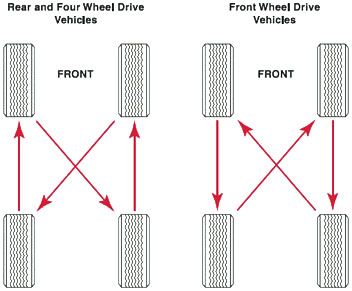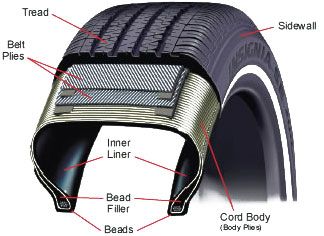Tire Maintenance Tips
Take care of your tires. They’ll return the favor.
Simply stated, better tire care makes for better tires. Here are some small things you can do that will make a big difference. And don’t forget to stop by Wheel Works any time for a free inspection. We’ll make sure your tires get what they need, giving you better mileage and performance in return.

Reading Your Tire Sidewall
When you look at your tire, the writing on the side might look like a jumble of letters and numbers. However, you can discover everything you need to know about your specific tire if you just break it down, piece by piece. Check out the labeled diagram to see where everything is located on your tire, and we’ll explain what it all means.
P215/65R15 95H
- Passenger vehicle tire: The first letter in this code indicates the tire’s class. The “P” on this tire means that it is meant for a passenger vehicle, like a car.
- Width of tire in millimeters: This is the section width from one sidewall to the other. For this tire, it is 215.
- Aspect ratio: This is the ratio of the tire’s height to its width. In this example, the ratio is 65%. That means the tire’s height is 65% of its width (215 millimeters), which equals 139.75 millimeters.
- Radial: The “R” marking on this particular tire indicates that it is a radial tire. This is the most common type of automotive tire.
- Diameter of wheel in inches: The “15” indicates that this tire will fit any wheel with a diameter of 15 inches.
- Load index & speed symbol: The load index of 98 means that this tire can support 1,653 pounds. If you times that by four tires, you will get the maximum weight your car can handle. The speed rating tells you the speed this tire is certified to safely handle under specific service conditions. In this example, the speed symbol is H, which indicates a speed of 210 km/hr or 130 mph.
- U.S. DOT safety standards code: Any tire that has passed all minimum Department of Transportation standards for sale in the U.S. will be given a DOT safety standards code.
- Tire ply composition and materials used: This indicates how many plies are in the tire tread and swidewall, as well as the materials used.
- Treadwear, traction, and temperature grades: The Department of Transportation requires all tire manufacturers to grade its tires under the Uniform Tire Quality Grade system. The treadwear rating refers to the tire’s durability, the traction rating refers to the tire’s ability to stop in a straight line on wet asphalt and concrete on the test track, and the temperature rating refers to the tire's resistance to the generation of heat when driven at high speeds.
- Maximum cold inflation load limit: This is the highest cold inflation pressure that this tire is designed to hold. “Cold” conditions basically means early in the morning, before outside temperatures or heat generated while driving have caused the tire pressure to increase.
Taking Care of Your Tires
There are three primary things to remember when it comes to taking care of your tires: inflate, rotate, and evaluate.
Inflate
Check your tire pressure monthly. You can find the recommended tire pressure for your vehicle in your owner’s manual, and it’s important to stick to that. Overinflated and underinflated tires can both cause various problems, from uneven treadwear to a higher risk of blowouts.
Rotate
Did you know that your tires wear unevenly? The front tires typically wear on the outer edges, because they lead the car into turns. The back tires wear down more evenly. Because you don’t want your front tires to wear out too quickly, it’s important to rotate them regularly!
Evaluate
Routinely look for signs of tread wear or damage. Sometimes, the best tool for evaluating a tire is the naked eye!

Rotating Your Tires
Let’s mix things up.
The type of vehicle you drive (rear-wheel, all-wheel, or front-wheel drive) will determine their rotation pattern. The chart below illustrates these different patterns.
How often should you rotate your tires?
Rotate your tires as recommended by the vehicle manufacturer. You can find this recommendation in your owner’s manual. A good rule of thumb is to rotate them every 5,000 miles.

The Anatomy of a Tire
Know your tires, inside and out.
We all know tires are made of rubber, but that’s not all. The chart below shows you the full anatomy of a tire, from the bead filler to the tread.